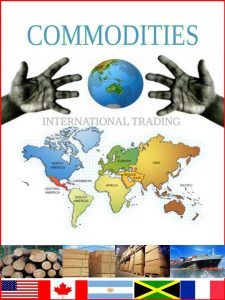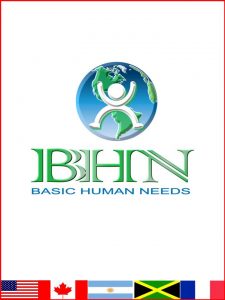In today’s fast-paced business world, optimizing inventory management is crucial for companies seeking to streamline operations, reduce costs, and stay competitive. Traditional inventory management systems often face challenges such as manual tracking, inaccurate data, and high overhead costs.
However, with the advent of blockchain technology and tokenization, businesses now have a powerful tool to revolutionize their inventory management processes.
In this article, we will explore how tokenizing your inventory can drive increased efficiency, and lower costs, and provide real-life examples of companies that have successfully implemented this innovative approach.

The Challenges of Traditional Inventory Management:
Imagine a small retail store struggling to keep track of its inventory manually. Countless hours are wasted on tedious inventory checks, leading to errors and discrepancies. Replenishing stock becomes a guessing game, resulting in overstocking or stockouts. Moreover, the lack of transparency in the supply chain hinders collaboration with suppliers and creates bottlenecks in the procurement process. These challenges not only increase operational costs but also lead to dissatisfied customers and missed revenue opportunities.
Let’s dive deeper into the challenges faced by businesses when relying on traditional inventory management methods. To illustrate these challenges, we’ll follow the story of a small retail store called “The Corner Shop.”
“The Corner Shop” is a quaint retail store located in a busy neighborhood. They offer a wide range of products, from groceries to household items. Like many small businesses, they initially managed their inventory manually, using pen and paper to track their stock levels.
On a typical day at “The Corner Shop,” the owner, Sarah, spends a significant amount of time conducting inventory checks. She meticulously counts the items on the shelves and compares them to the recorded quantities in her ledger. This manual process is time-consuming, prone to human error, and takes away precious hours that Sarah could spend on other crucial aspects of running her business.
Moreover, due to the limitations of manual tracking, Sarah often encounters inaccuracies in her inventory records. Mistakes in recording sales or misplaced items lead to discrepancies between the actual stock levels and what the ledger indicates. As a result, she occasionally runs into situations where the items customers desire are not available, causing frustration and missed sales opportunities. On the other hand, overstocking certain items ties up capital and valuable shelf space, leading to wastage and reduced profitability.
In addition to these internal challenges, Sarah faces difficulties in collaborating with her suppliers effectively. When it comes to restocking her inventory, Sarah relies on periodic phone calls or emails to place orders. However, this process lacks transparency, making it challenging to track the status of her orders or anticipate delays. As a result, Sarah occasionally receives late deliveries, disrupting her inventory management plans and potentially disappointing her customers.
The manual nature of inventory management at “The Corner Shop” also leads to inefficiencies in the procurement process. Sarah often finds herself manually comparing prices and negotiating with different suppliers to get the best deals. This time-consuming process adds complexity to her workload and prevents her from focusing on more strategic aspects of her business.
Furthermore, the lack of real-time visibility into her inventory levels means that Sarah struggles to accurately forecast demand. Without access to up-to-date data, she relies on intuition and guesswork to determine when and how much to reorder. This leads to instances where she either overstocks certain items, tying up her cash flow, or understocks popular items, resulting in dissatisfied customers.
In summary, “The Corner Shop’s” experience exemplifies the challenges faced by businesses relying on traditional inventory management methods. Manual tracking, inaccuracies, limited transparency, inefficient procurement processes, and the lack of real-time visibility all contribute to increased costs, missed revenue opportunities, and customer dissatisfaction.
However, there is hope for Sarah and other businesses like hers. By embracing the concept of tokenizing inventory and leveraging blockchain technology, they can overcome these challenges and unlock a new level of efficiency, cost reduction, and customer satisfaction.
The next sections of this article will explore the benefits of tokenization and provide real-life examples of successful implementations in various industries.
READ – BE A VALIDATOR FOR ITEM BANC
Understanding Tokenization
Tokenization is a process that involves representing real-world assets, such as physical goods or inventory, as digital tokens on a blockchain network. Each token represents a specific unit or quantity of the asset, providing a digital representation of ownership and value. In the context of inventory management, tokenization enables businesses to create digital representations of their products, track their movement in real time, and facilitate efficient transfer of ownership or possession.

Benefits of Tokenizing Inventory:
- Enhanced Efficiency: Tokenizing inventory streamlines the entire inventory management process. By digitizing the information and recording it on a blockchain, companies gain real-time visibility into their inventory levels, location, and movement. This enables more accurate demand forecasting, efficient procurement, and optimized supply chain management.
- Improved Transparency: Tokenization brings transparency to the supply chain by providing a shared, immutable ledger accessible to all authorized participants. Each transaction involving the inventory, such as transfers or sales, is recorded on the blockchain, ensuring traceability and accountability. Suppliers, retailers, and customers can verify the authenticity, provenance, and condition of products, enhancing trust and reducing the risk of counterfeiting.
- Reduced Costs: Traditional inventory management systems often involve high overhead costs, such as manual tracking, paperwork, and reconciliation efforts. Tokenization eliminates these inefficiencies by automating inventory management and reducing the need for intermediaries. Companies can optimize their inventory levels, minimize stockouts and overstocking, and streamline procurement processes, resulting in cost savings and increased profitability.
Real-Life Examples:
- Walmart’s Supply Chain Innovation: Walmart, one of the world’s largest retailers, has been actively exploring blockchain technology to improve its supply chain efficiency. By tokenizing its inventory, Walmart can track the movement of products from suppliers to stores in real-time. This enables faster recalls in case of product issues, reduces wastage, and ensures fresher produce on the shelves.
- Maersk and IBM’s TradeLens: Maersk, a global leader in shipping and logistics, partnered with IBM to develop TradeLens, a blockchain-based platform for supply chain management. TradeLens tokenizes shipping containers, allowing participants in the supply chain to track the movement, condition, and location of containers. This improves coordination, reduces paperwork, and expedites customs processes, leading to cost savings and faster delivery times.
- Everledger’s Diamond Tracking: Everledger, a technology company, leverages blockchain to track the provenance of diamonds, tokenizing each diamond’s unique characteristics and ownership history. This enhances transparency in the diamond supply chain, reduces the risk of counterfeit diamonds, and increases trust among stakeholders.
Implementation Considerations
- Integration with Existing Systems: When considering tokenizing inventory, businesses need to ensure compatibility and integration with their existing inventory management systems. Seamless data flow between the blockchain-based inventory system and other enterprise systems, such as ERP or POS, is essential for a successful implementation.
- Scalability and Network Effects: To fully realize the benefits of tokenization, businesses should consider the scalability of the chosen blockchain network. The network’s capacity, transaction speed, and ability to handle a large volume of inventory data are crucial for long-term success. Additionally, joining established blockchain networks or consortia can amplify the network effects and facilitate collaboration with industry peers.
- Security and Data Privacy: Protecting sensitive inventory data is paramount. Businesses must implement robust security measures, such as encryption and access controls, to ensure the integrity and confidentiality of inventory-related information. Compliance with data protection regulations and privacy best practices is also vital.
WHAT TO LOOK FORWARD TO?
The tokenization of inventory represents a paradigm shift in how businesses manage their supply chains and track their assets. As blockchain technology continues to evolve and mature, the adoption of inventory tokenization is expected to increase across industries. Additionally, the integration of emerging technologies like the Internet of Things (IoT) can provide real-time data feeds to the blockchain, further enhancing the accuracy and efficiency of inventory management.
Conclusion:
Tokenizing inventory offers businesses a transformative solution to the challenges of traditional inventory management. By leveraging blockchain technology, companies can achieve increased efficiency, improved transparency, and reduced costs in their supply chain operations. Real-life examples, such as Walmart, Maersk, and Everledger, demonstrate the tangible benefits of inventory tokenization. As businesses embrace this innovative approach and overcome implementation considerations, they position themselves for a more agile, optimized, and competitive future in inventory management.










 –
–